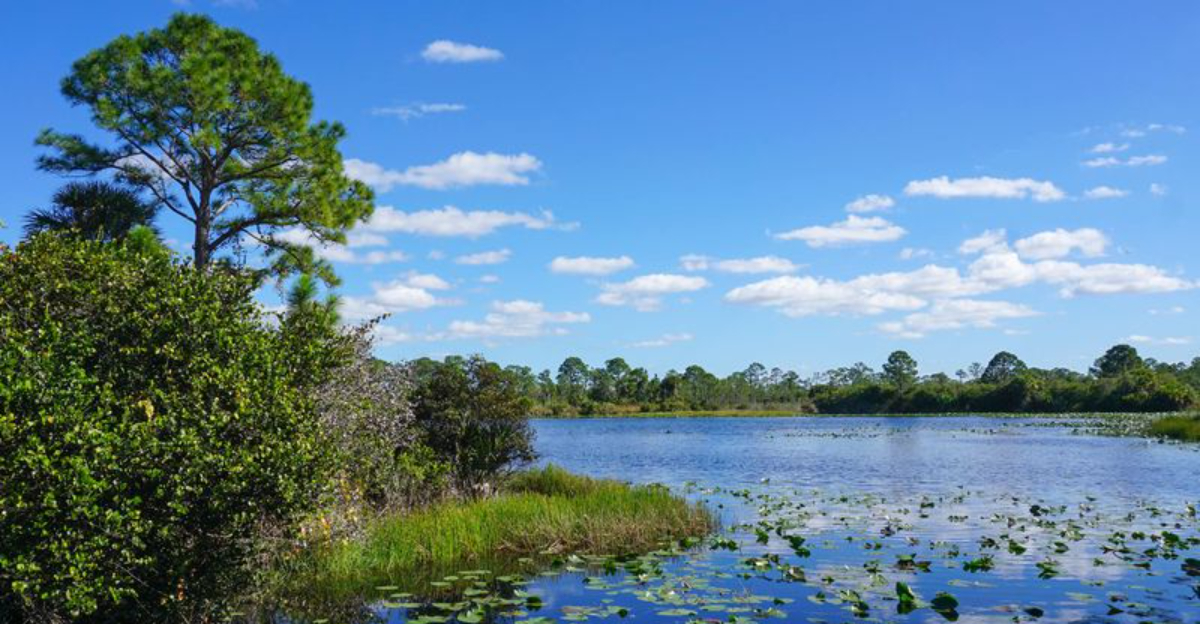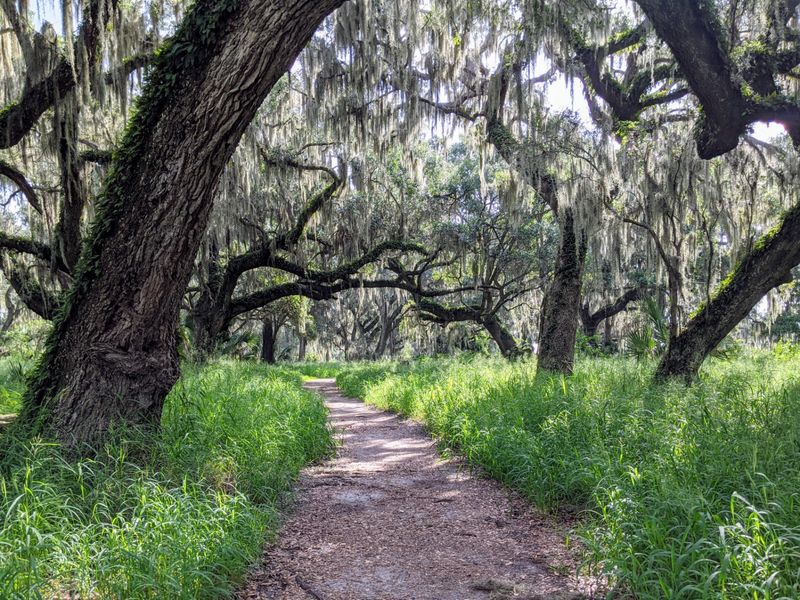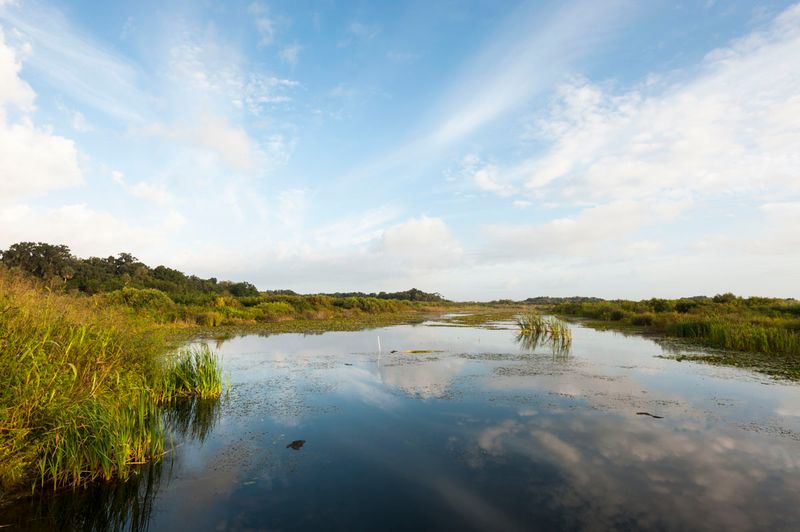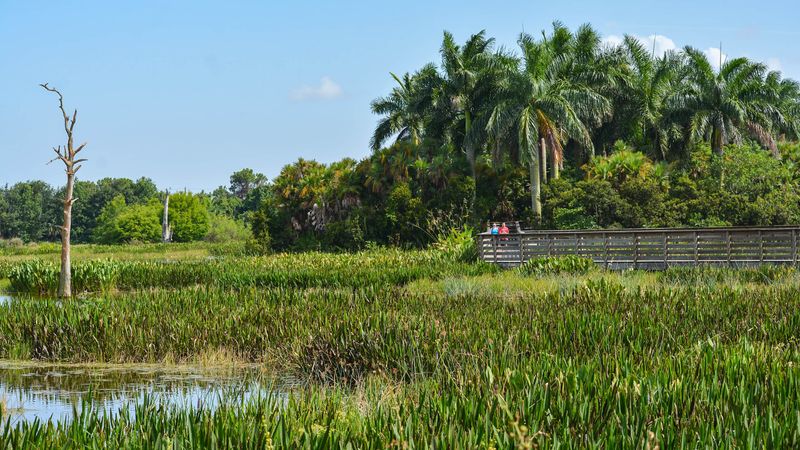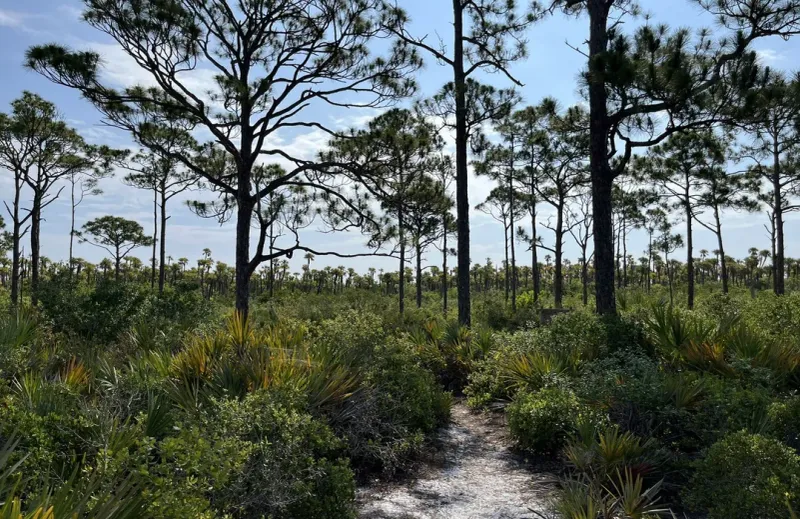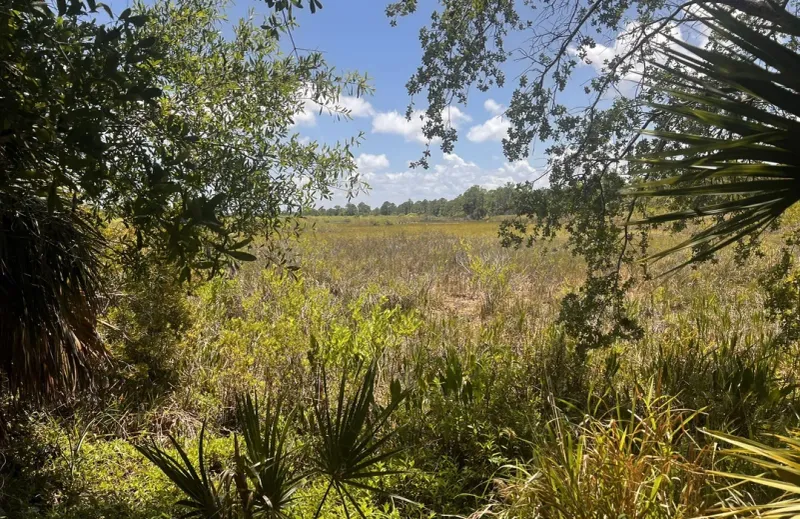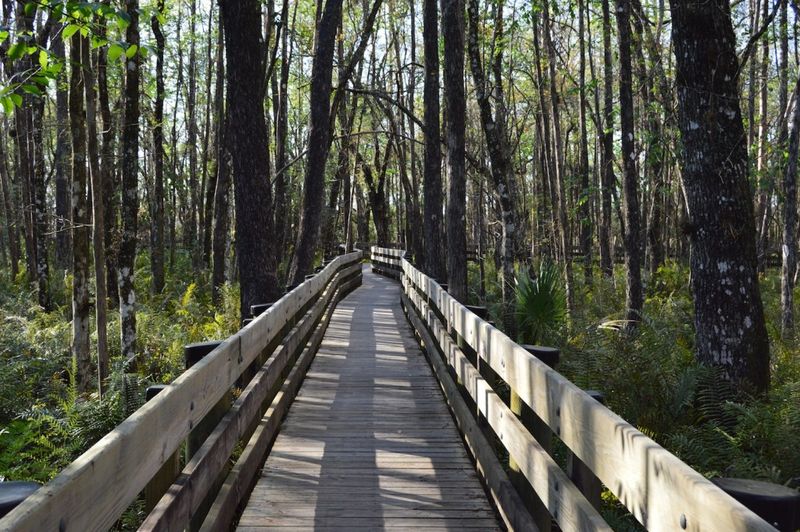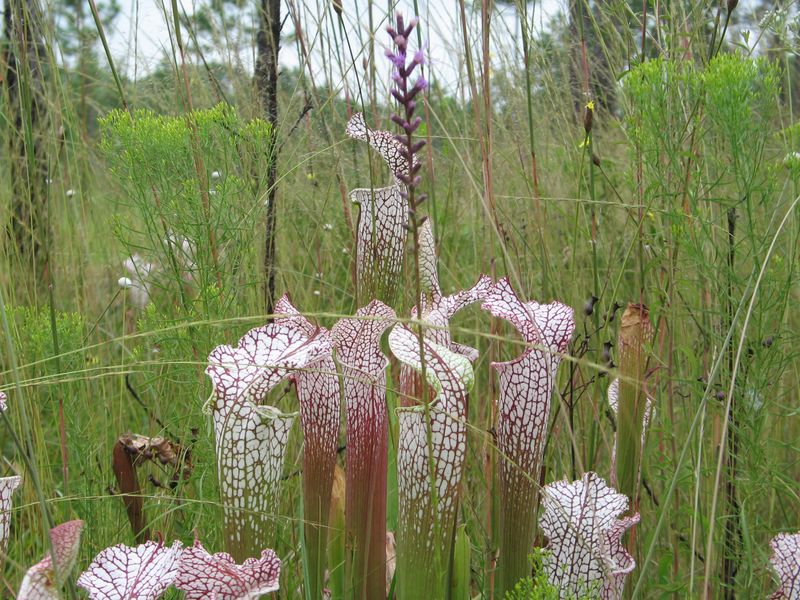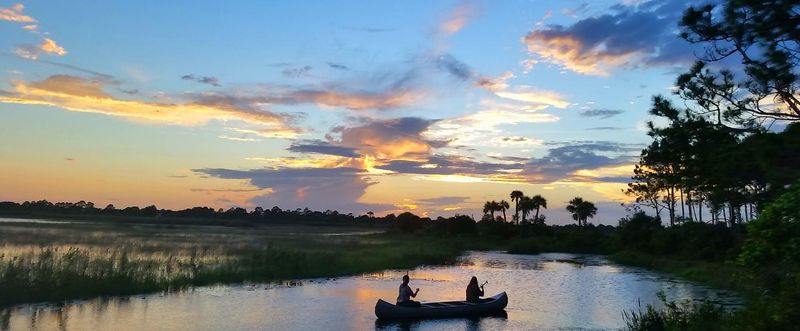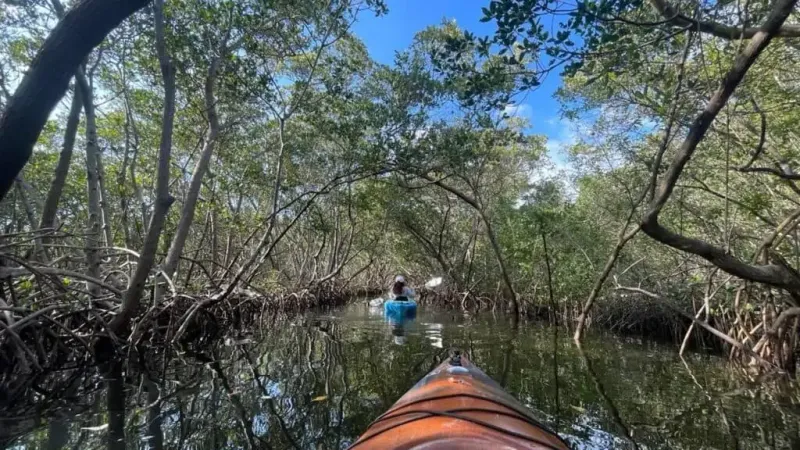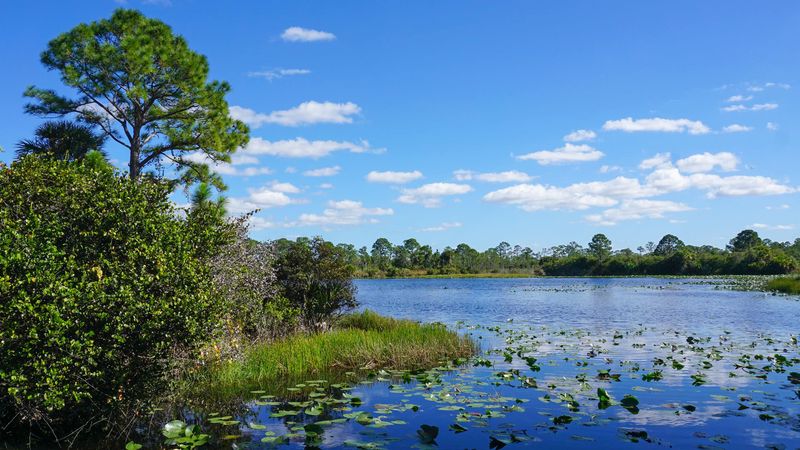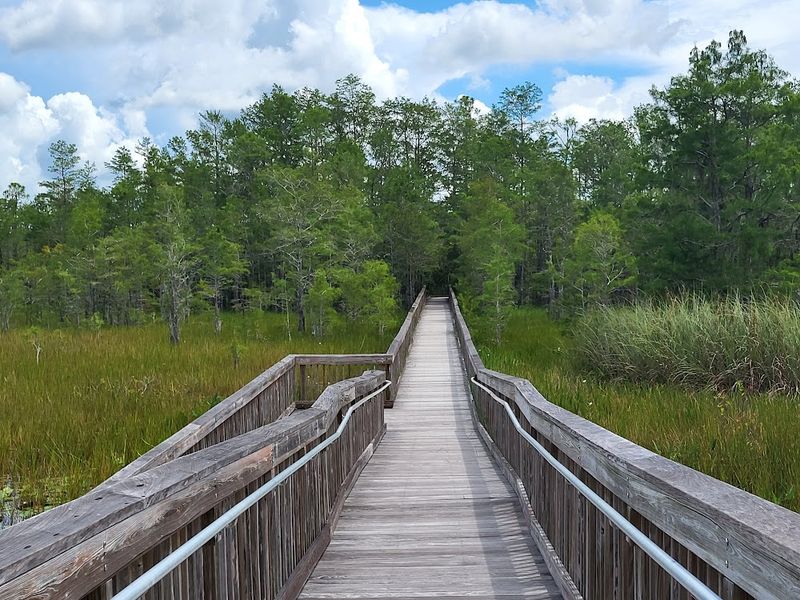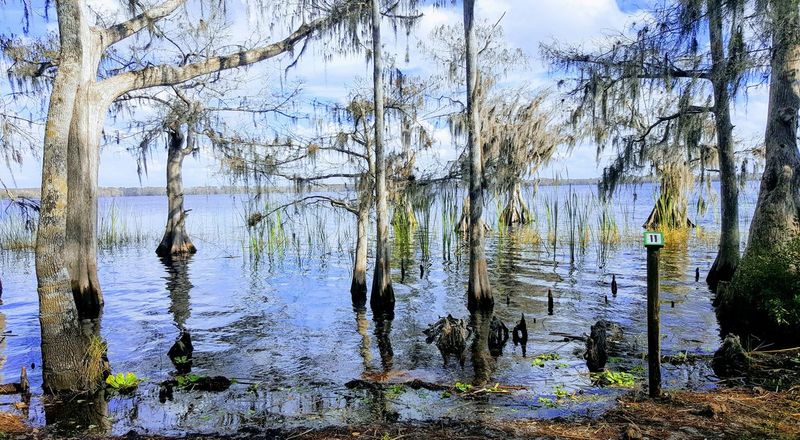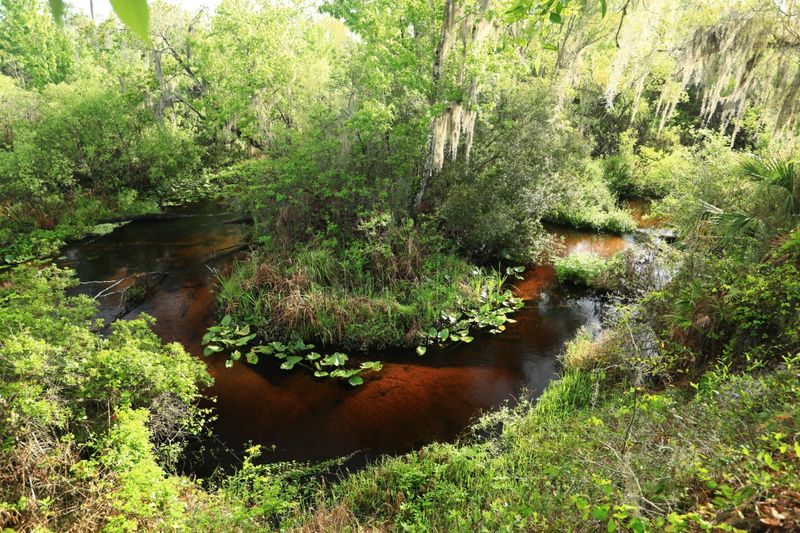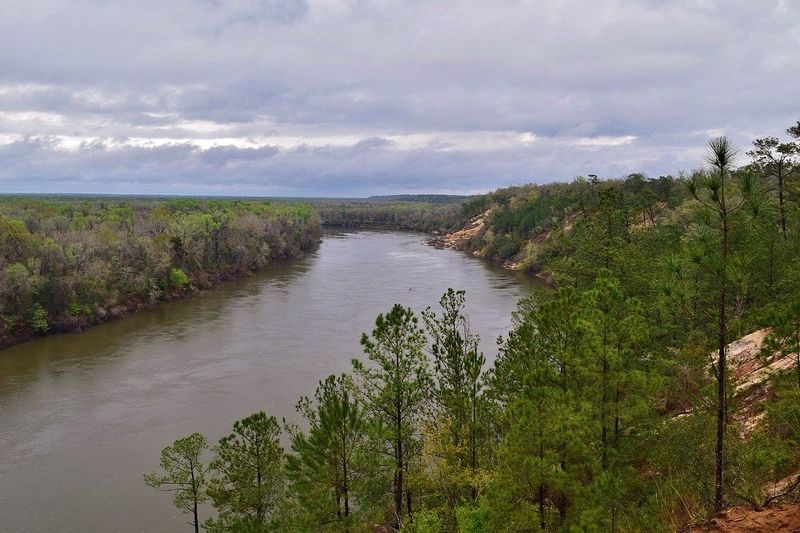Visiting a nature reserve is an easy way to add peace and fresh air to your week. Trails, marshes, and forests here are full of wildlife waiting to be discovered. Big state parks and famous beaches take the spotlight, but smaller places offer a quieter kind of wonder. These reserves invite you to slow down, breathe deeply, and feel part of Florida’s natural rhythm. Here are 15 that deserve a place on your travel list.
1. Circle B Bar Reserve (Lakeland)
Once a working cattle ranch, this reserve has become one of Florida’s finest birding spots. Wide trails lead past lakes where herons stalk fish in the shallows. The oak hammocks here provide shade and a sense of timeless calm. With each step, the landscape shifts from swamp to prairie.
Alligators often rest along the water’s edge, and ospreys circle above in constant motion. Winter months bring flocks of migratory birds, filling the skies with movement. Families wander the paths with binoculars, but the place still feels unhurried. Every visit feels like a new discovery.
2. Emeralda Marsh Conservation Area (Lake County)
This mosaic of marshes, swamps, and hardwood forests lies near the Harris Chain of Lakes. The water reflects endless skies dotted with wading birds. Boardwalks let you walk into the wetlands while keeping your feet dry. The sound of frogs fills the evening air.
Few places offer such a wild, untouched atmosphere so close to towns. You might spot bald eagles hunting across open water. Photographers love the way sunrise spreads gold across the grasses. The reserve rewards those who take their time.
3. Green Cay Nature Center & Wetlands (Boynton Beach)
A raised boardwalk winds through constructed wetlands rich with life. Interpretive signs explain the plants and animals around you. The center’s educational displays make it easy to understand the fragile ecosystems here. Turtles slip quietly under the water’s surface.
During migration, flocks of colorful warblers stop to rest in the trees. Visitors often pause to watch purple gallinules stepping across floating lilies. The setting feels like a living classroom wrapped in beauty. Every turn reveals something new.
4. Seabranch Preserve State Park (Stuart)
Scrub, mangroves, and flatwoods meet the Atlantic breezes in this coastal park. Trails loop through sandy soil where gopher tortoises dig their burrows. Pines rise tall above the low brush, and wildflowers brighten the path in spring. A quiet energy fills the landscape.
Hikers often encounter deer moving softly between trees. The mix of coastal and inland habitats makes this place unique. Birdwatchers prize the park for sightings of painted buntings and woodpeckers. It’s a reminder of Florida’s diverse environments.
5. Indrio Savannahs Preserve (Fort Pierce)
Savannahs stretch wide with open grasses and scattered pines. Shallow wetlands host roseate spoonbills, their pink feathers glowing in the sun. Wooden bridges cross over still waters that mirror clouds overhead. The breeze carries the scent of pine and wildflowers.
This is a place for slow exploration rather than rushing. Interpretive trails help you understand the delicate balance of the ecosystem. Picnics under shady oaks feel timeless. You leave with the sense of stepping into old Florida.
6. Spruce Bluff Preserve (Port St. Lucie)
History and nature blend at this quiet preserve. The site includes a Native American burial mound, one of the area’s oldest landmarks. Trails wind past scrubby flatwoods and wetlands. Dragonflies dart across sunlit clearings.
The paths are short, making the area accessible for a quick escape. Interpretive signs tell stories of early inhabitants. Butterflies hover near blooming plants in summer. The preserve holds both memory and beauty.
7. Six Mile Cypress Slough Preserve (Fort Myers)
This slough stretches for miles, a ribbon of wetland alive with sound. A raised boardwalk takes you deep into the swamp. Cypress knees rise from dark waters, and air plants cling to branches above. Anhingas dry their wings in the sunlight.
Visitors often hear the splash of turtles slipping into water. Guided walks explain the complex web of life here. Rain brings fresh energy, filling the slough with frogs’ songs. It feels like stepping into another world.
8. Tarkiln Bayou Preserve State Park (Pensacola)
Rare pitcher plants thrive in the bogs here, their shapes both strange and beautiful. A long boardwalk leads through pine flatwoods to the bayou. The water glimmers with shifting light. Marsh grasses bend in the breeze.
Endangered species like the panhandle lily bloom in spring. Bird calls echo across the open water. The combination of rare plants and sweeping views creates lasting impressions. Every season brings subtle changes worth noticing.
9. Savannas Preserve State Park (Jensen Beach)
This is the largest freshwater marsh system along Florida’s east coast. Canoe trails glide past sawgrass and palms. The water is home to otters, turtles, and countless fish. Quiet paddling offers a fresh perspective.
On land, hiking and horseback riding trails weave through diverse habitats. Rangers host programs that highlight the park’s history. Sunsets turn the marsh into a canvas of orange and pink. It’s a place for both adventure and reflection.
10. Weedon Island Preserve (St. Petersburg)
Mangrove forests and tidal flats define this coastal preserve. Kayakers paddle through shaded tunnels of roots and leaves. The boardwalk rises above brackish ponds alive with fish. Interpretive centers connect the land to its Indigenous history.
Birders treasure the sight of reddish egrets dancing across the shallows. Archaeological sites add depth to the visit. The mix of culture and nature feels seamless. The preserve offers both beauty and perspective.
11. Loxahatchee Slough Natural Area (Palm Beach Gardens)
Over 12,000 acres of wetlands and pine flatwoods stretch in every direction. Trails run long and open, perfect for exploration. Waterways snake quietly between grasses. Wildlife flourishes in the mosaic of habitats.
Sunrise paints the sky in shades of peach and violet. Deer, otters, and countless birds appear at dawn. Few visitors venture far, so solitude is easy to find. The slough rewards patience and curiosity.
12. Grassy Waters Preserve (West Palm Beach)
This preserve protects the water supply for the city, yet it feels far removed. Boardwalks and canoe trails weave through cypress wetlands. Sawgrass stretches to the horizon. Alligators bask along the banks.
The visitor center shares details about the Everglades ecosystem. Photographers flock to capture reflections in the water. Families wander boardwalks, learning together. It’s both practical and profoundly beautiful.
13. Disney Wilderness Preserve (Kissimmee)
Here, conservation takes center stage. Disney helped restore these 11,500 acres of wetlands, prairies, and forests. Trails invite exploration through landscapes once lost to development. Sandhill cranes call from the open meadows.
The reserve proves that land can be healed and protected. Wildflowers bloom where cattle once grazed. Families enjoy the easy trails and interpretive signs. The preserve offers hope as well as beauty.
14. Tiger Creek Preserve (Lake Wales)
This ridge land harbors rare plants and ancient landscapes. Trails pass through longleaf pine and scrub. Sandhills feel open and sunlit, with broad skies above. The creek winds through shaded forests.
The Nature Conservancy manages the land for protection. Gopher tortoises dig burrows along sandy slopes. Hikes feel remote and personal, even near towns. It’s a place where time slows.
15. Apalachicola Bluffs And Ravines Preserve (Bristol)
Deep ravines cut into the landscape, a rarity in Florida’s flat terrain. The bluffs rise above the Apalachicola River. Trails climb and descend through hardwood forests. Spring brings wild azaleas to life.
Rare species find refuge in this unique geography. The air feels cooler in shaded gullies. Hikers discover a different side of Florida here. The reserve combines rugged beauty with scientific importance.
